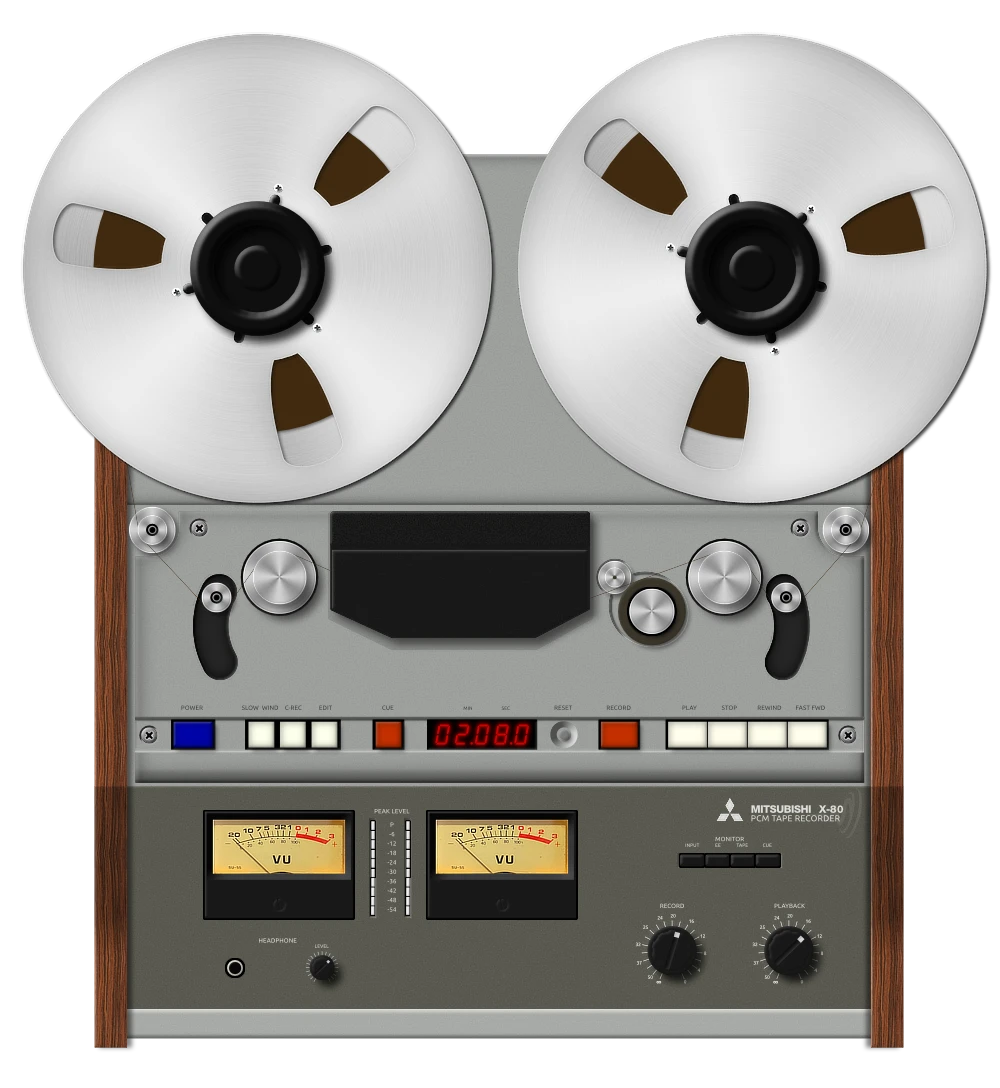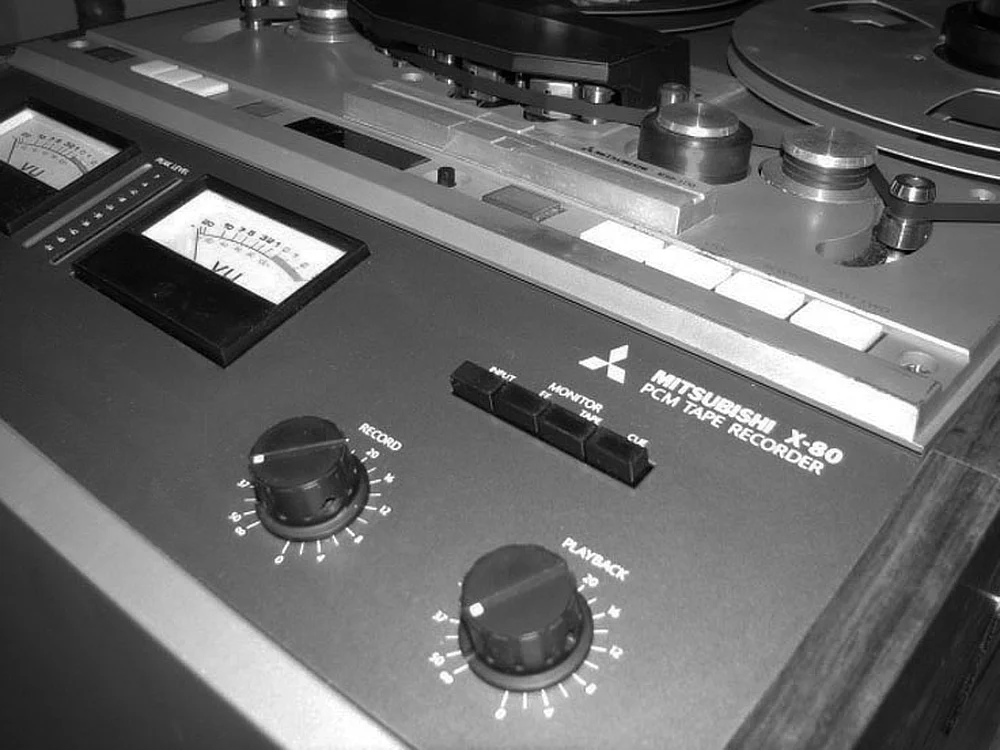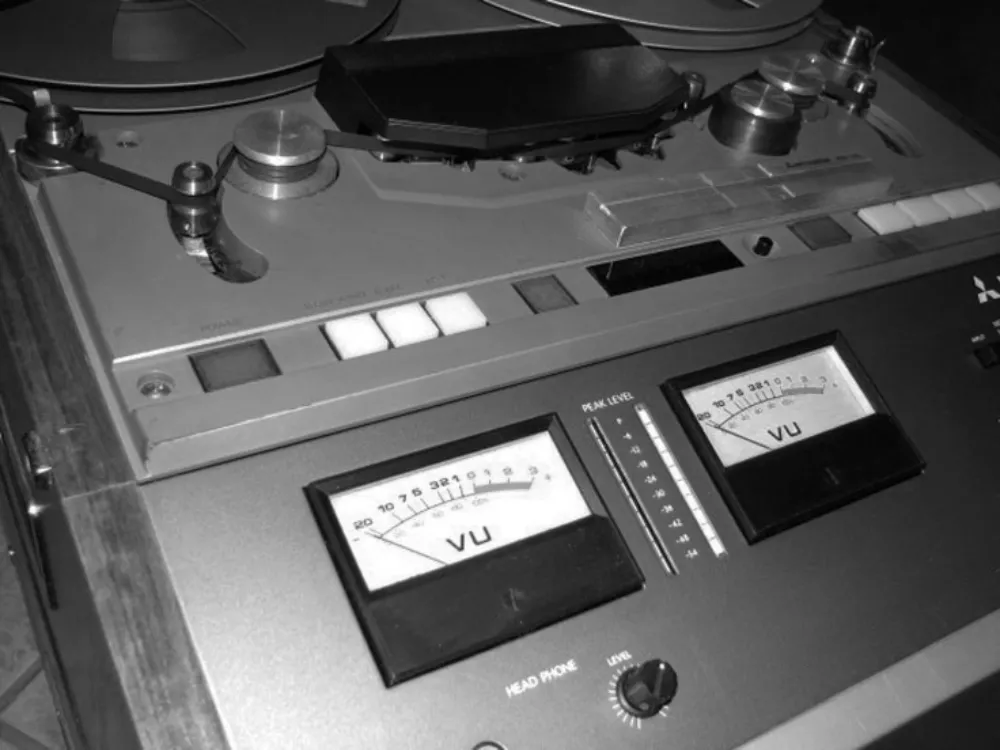The Mitsubishi X-80 Digital Recorder was an early digital audio recorder developed by the Japanese electronics manufacturer Mitsubishi Electric. The device was introduced in 1980 and was one of the first digital audio recorders available on the market. At the time of its introduction, the X-80 was considered to be a revolutionary product, as it offered significant advantages over traditional analogue recording technologies. Digital recording allowed for much higher fidelity and accuracy, as well as the ability to make multiple copies of recordings without degradation in quality.
The Mitsubishi X-80 Digital Recorder used a proprietary 16bit PCM digital recording format with a sample rate of 50.4kHz, which was not compatible with the standard 44.1kHz sample rate used by the Compact Disc (CD) format. This meant that recordings made on the Mitsubishi X-80 could not be directly transferred to CDs or other digital recording systems that used the CD format.
The reason for the incompatibility between the X-80’s sample rate and the CD format is due to the differences in the way digital audio is encoded and decoded. The Mitsubishi X-80 used a non-standard sample rate that was optimised for high-fidelity recording, while the CD format used a standard sample rate that was based on the limitations of the available digital technology at the time.
In order to transfer recordings made on the Mitsubishi X-80 to a CD or other digital format, the audio signal needed to be resampled at the CD format’s standard sample rate of 44.1kHz. This process could result in some loss of audio quality, as the resampling process would inevitably introduce some degree of distortion and artificing.
Despite this limitation, the Mitsubishi X-80 remained a popular recording tool among professional recording engineers, who appreciated its high-quality digital recording capabilities. Over time, new digital recording technologies were developed that were more compatible with the CD format, and the X-80 was eventually replaced by newer, more versatile digital audio recorders.
“The Mitsubishi X-80 Digital Recorder, which preceded the Mitsubishi ProDigi format, shared many similarities with the ProDigi format but used a unique sample rate of 50.4 kHz that rendered it incompatible with other digital audio systems, though tapes recorded on the X-80 could be played back on X-86 series machines.”
The Mitsubishi X-80 digital recorder was created by Kunimaro Tanaka, a Mitsubishi engineer and audiophile. This device included matching transformers in its inputs and outputs, utilised discrete Class A electronics. At a tape speed of 38 cm/s, it could record up to 60 minutes of material on a ¼” tape. Originally intended for mastering already mixed material meant for LP pressing and CD production, it later became the primary recording device for “direct-to-two-track” recordings.
The Mitsubishi X-80 was designed with an analogue recorder aesthetic, featuring a heavy-duty, die-cast transport, oversized reel and capstan motors, and disc brakes. The transport electronics were mounted below the deck in a card cage, while the analogue and PCM electronics were housed in a separate chassis. The transport and electronics were connected by four locking multipin cables.
Balanced XLR connectors were used for interfacing with the outside world, and a pair of RCAs were provided for additional unbalanced pre-transformer outputs. The front panel featured two large VU meters for RMS level monitoring, peak reading LEDs for absolute digital level monitoring, and precision stepped attenuators for input and output level control. The X-80 also offered a four-position interlocking push-button for input, EE (A/D, D/A), reproduce, and analogue, as well as a headphone jack with level control.
Editing with the Mitsubishi X-80 required the use of white cotton gloves to avoid oil contamination on the tape, and a vertical splice was made using a 1/4″ editing block and special thin-based splicing tape. A small space was left between the two edited pieces of recording tape to enable electronic crossfades over the splice.
Tom Jung, a renowned audio engineer and founder of the DMP label, was one of the early adopters of the Mitsubishi X-80 Digital Recorder. Jung was known for his meticulous approach to audio engineering, and the Mitsubishi X-80’s high-quality audio recording capabilities made it well-suited for his needs. He used the Mitsubishi X-80 to record a variety of musical genres. However, he was not a fan of it’s unusual 50.4kHz sampling rate that was incompatible with the emerging CD format.
The Mitsubishi X-80 Digital Recorder was eventually replaced by newer and more advanced digital audio recorders, including Mitsubishi’s own X-86 series machines, which offered improved functionality and greater compatibility with other digital audio systems. Other companies also began to introduce their own digital audio recorders, and as the technology advanced, digital audio recording became increasingly accessible and affordable for a wider range of users.
Despite its pioneering role in the development of digital audio technology, the Mitsubishi X-80 was eventually phased out of production, after a production run of only 200 units, and today it is primarily remembered as a groundbreaking audio recording device that helped to pave the way for modern digital audio technology.




